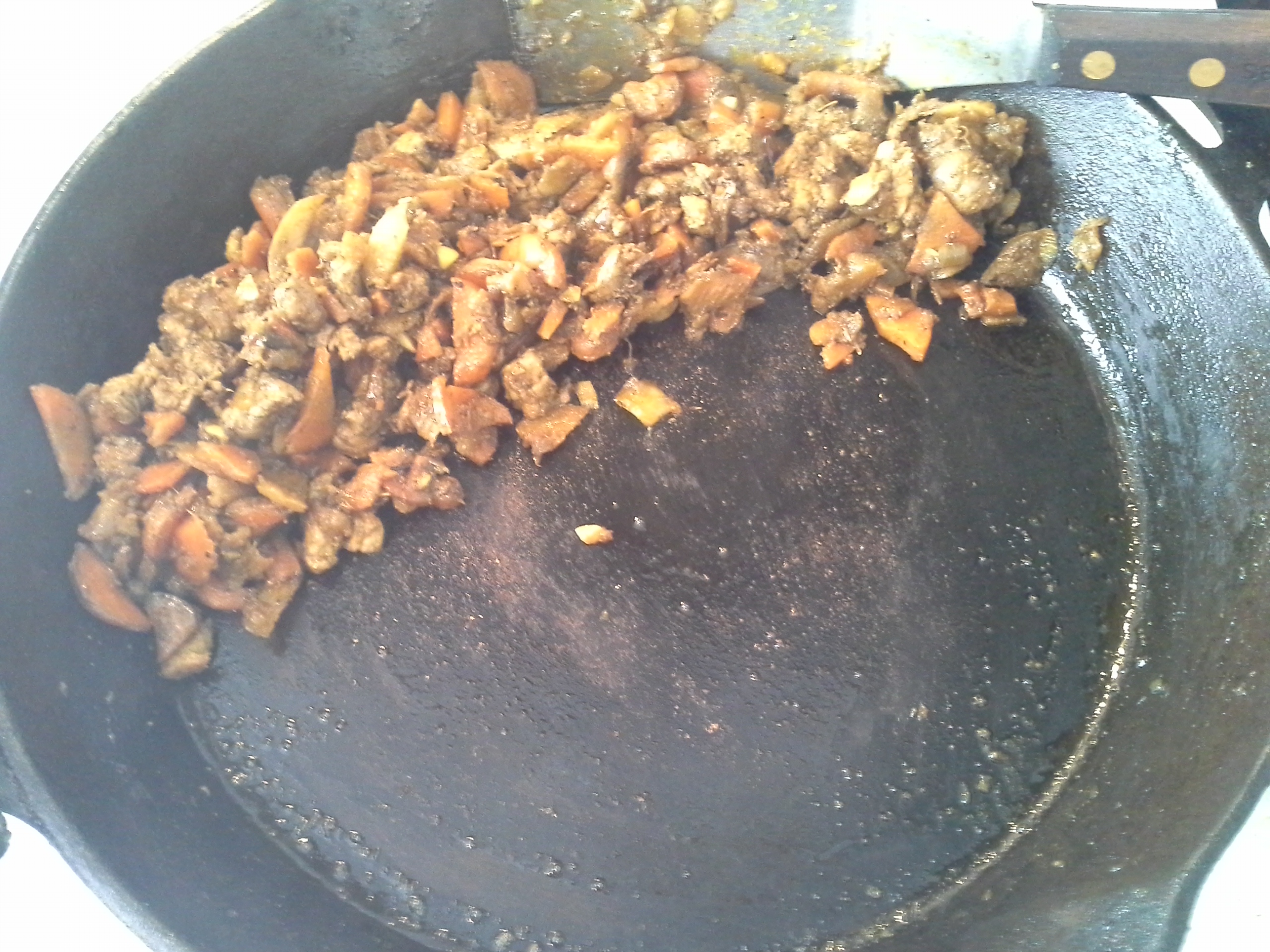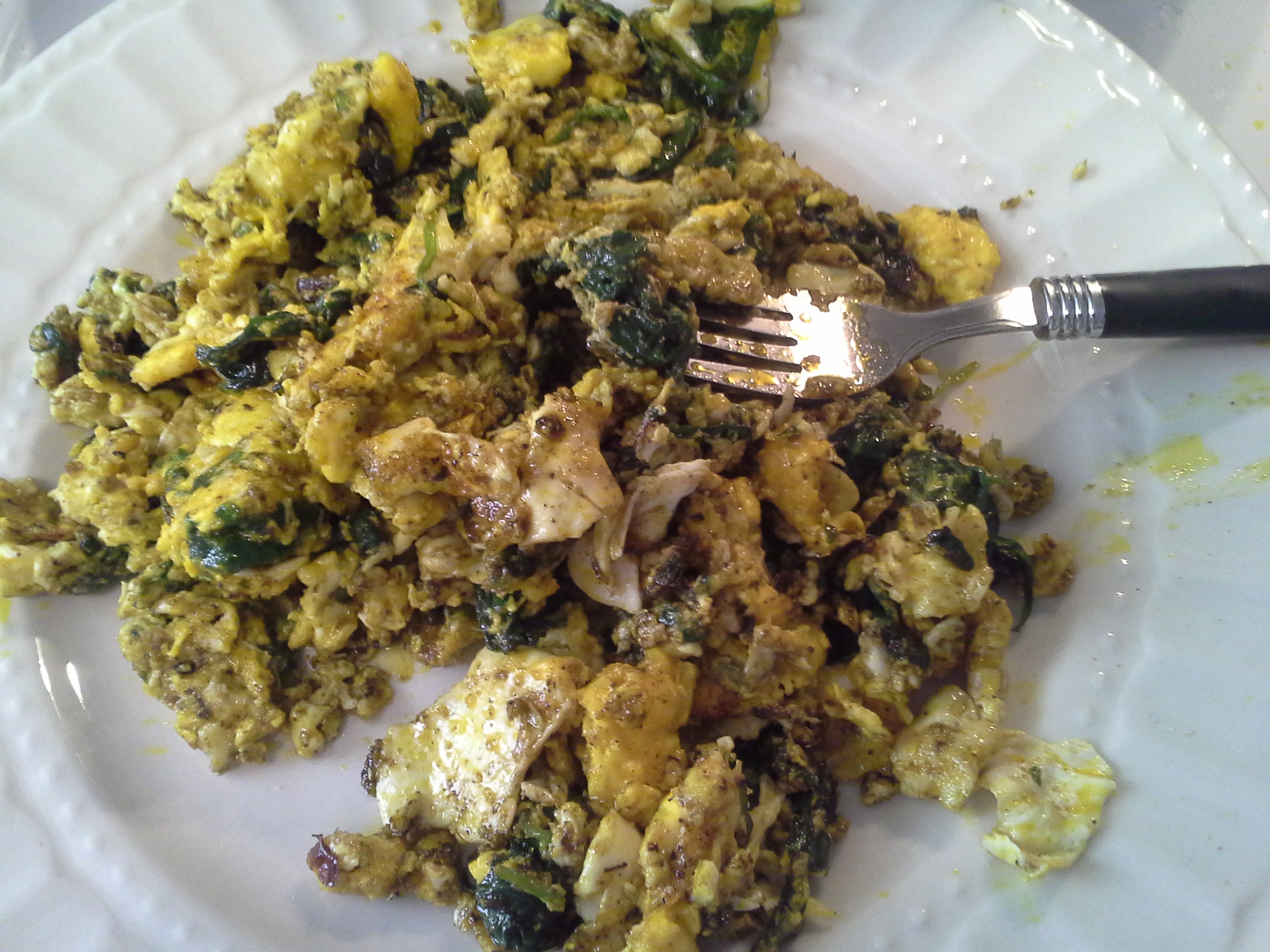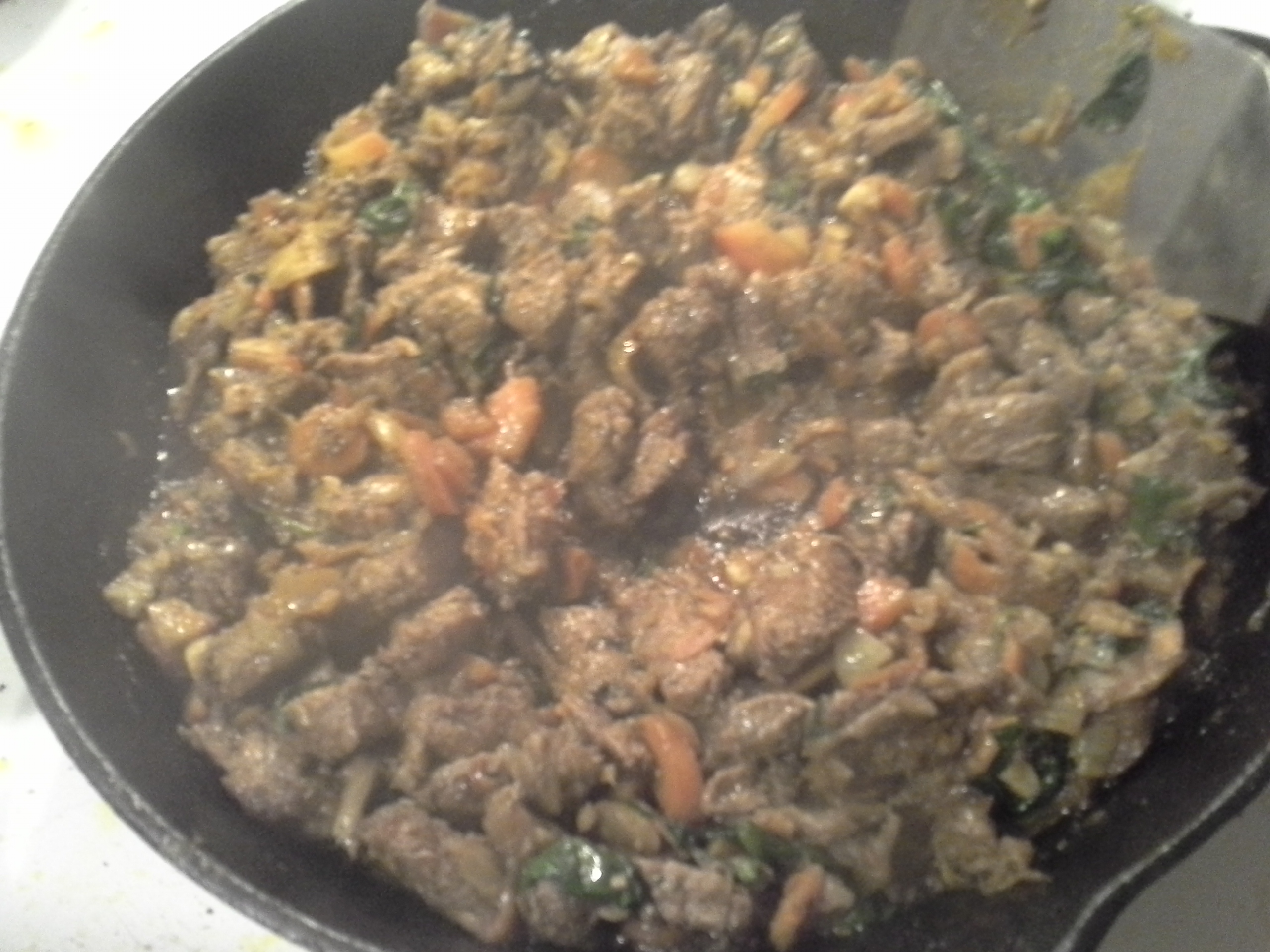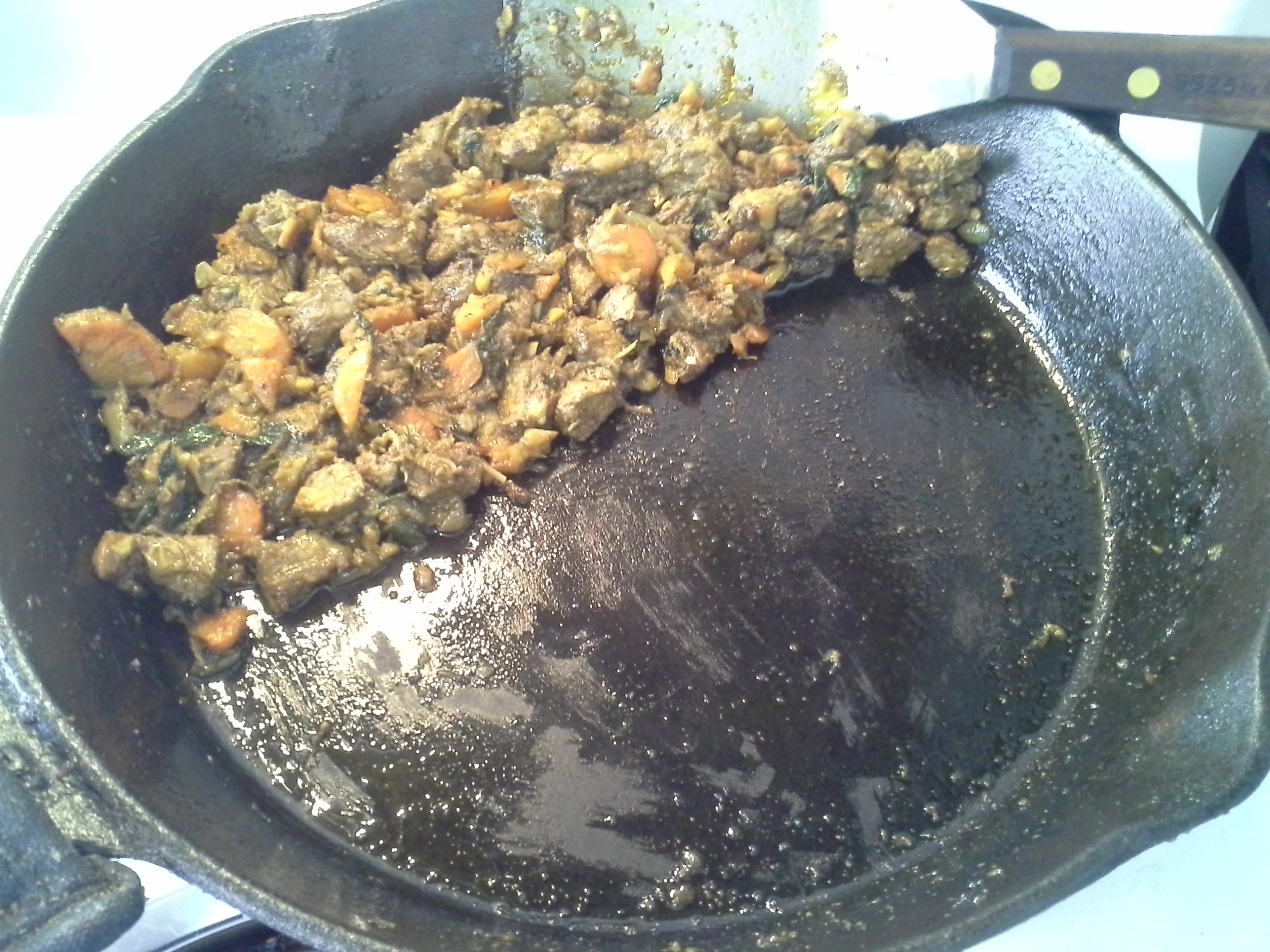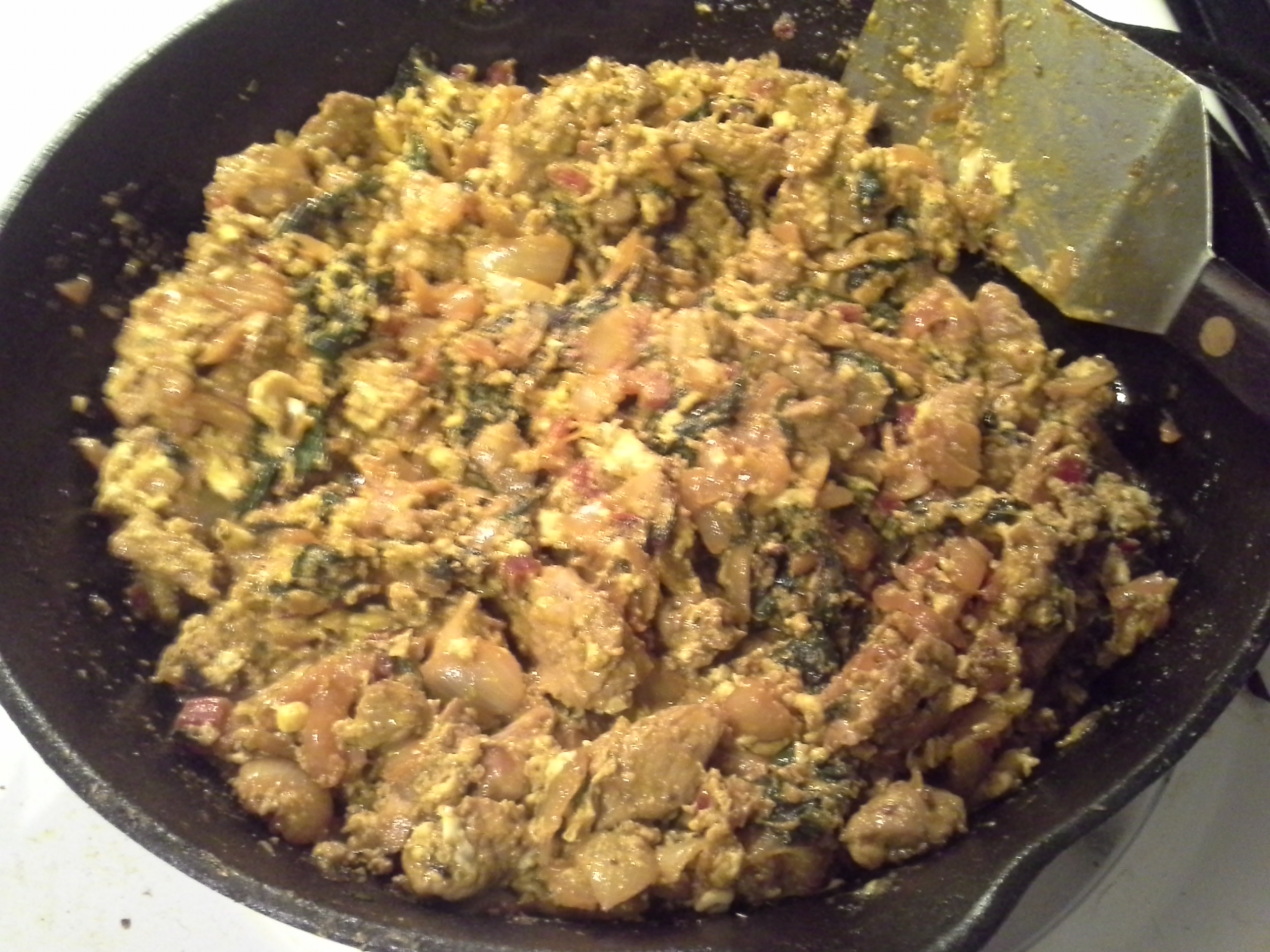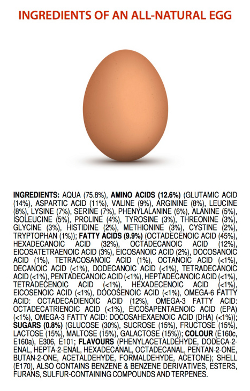 This article from io9, “What if natural products came with a list of ingredients?,” has been lighting up my Facebook news feed for the past couple of days. A chemistry teacher in Australia put together a few infographics that show just how dazzlingly complex natural, whole foods are. Once you spell out all the chemical constituents, a piece of food as simple as an egg, for instance, is just as loaded with big words that most people don’t understand as any package of processed, preserved, enriched industrial foodlike substance you’ll find taking up most of the space on supermarket shelves.
This article from io9, “What if natural products came with a list of ingredients?,” has been lighting up my Facebook news feed for the past couple of days. A chemistry teacher in Australia put together a few infographics that show just how dazzlingly complex natural, whole foods are. Once you spell out all the chemical constituents, a piece of food as simple as an egg, for instance, is just as loaded with big words that most people don’t understand as any package of processed, preserved, enriched industrial foodlike substance you’ll find taking up most of the space on supermarket shelves.
I haven’t checked to be sure his lists of chemical ingredients are correct, but the idea itself is certainly true. Whole food contains multitudes. Still, these images seem to have been created with the connotation that, hey, if natural food is so complex, quit worrying so much about what you eat! Calm down, it’s all chemicals anyway. And this is exactly the opposite of the lesson that people should draw from these images.
As with pretty much everything else in life, when it comes to chemicals, context makes all the difference. The whole foods “movement,” if you can call it that, certainly has its share of credulous, panic-stricken people, but the vast majority of those who try to avoid the industrial food supply aren’t worried about chemicals full stop, they’re worried about particular chemicals, in particular amounts, in particular contexts.
The principle of hormesis is well known — in short, the dose makes the poison … or the cure. It’s easy enough to think that food additives are perfectly healthy — after all, they’re FDA-approved, right? Conventional nutritional wisdom, though, is flimsy at best, and built on a house of cards: regulatory capture; confirmation bias; institutional arrogance; cherry-picked data; government subsidies with strings attached that assume the unproven as fact; observational studies that can serve at most as the basis for hypotheses that must be rigorously tested in randomized, controlled trials; and so on.
This, of course, brings me to Friedrich Hayek. Perhaps his most valuable contribution to economics was the way in which Hayek explained the complexity of social order, pointing out that knowledge is distributed. The things individual economic actors know about individual needs, wants, preferences, supplies, skills, and conditions are widely dispersed. These things can’t be aggregated into central knowledge because there’s no way to collect the data. That’s why many economists refer to economic activity as a discovery process — only by allowing people to act to reach their own goals using their own portion of the local knowledge that exists throughout society can those goals best be met. Central intervention only short-circuits this process.
If social interactions are complex, how much more complex is the interplay between the uncountable chemicals, bacteria, genetic markers, environmental conditions, and lifestyle habits within every one of those members of society? The dominant establishment perspective — that any particular isolated chemical, or combination thereof, that hasn’t been proven dangerous after some period of testing is therefore assumed safe — is astoundingly hubristic. We all know that the absence of evidence is not evidence of absence, but this is rarely heeded in the social application of science. Especially when it comes to conventional nutritional wisdom, where both scientists and the promulgators of their findings play fast and loose with correlation and causation.
The complexity of real, whole food is one of the primary reasons that a “paleo” diet makes so much intuitive sense to me. As Terry Wahls pointed out, as she navigated the medical research about the multiple sclerosis that was crippling her, she decided to self-experiment with her own brain cell biology. If your body is missing the chemicals that it needs to create and maintain the brain’s myelin, synapses, and mitochondria, she reasoned, that in itself may be the problem. Although Wahls started with supplements, she said, “it occurred to me that I should get my long list of nutrients from food — that, if I did that, I would probably get hundreds, maybe thousands, of other compounds that science had yet to name and identify, but would be helpful to my brain and my mitochondria.”
Millions of years of evolution have adapted the internal complexity of our bodies to interact with the external complexity of the world around us in ways that we have not fully comprehended, and may never. So, the desire to limit consumption of modern food additives is not a rejection of science, it’s an embrace of science with much greater scope and nuance — as well as a recognition of its limits. The fact that I can eat an Oreo and not die from it tells me nothing about the marginal effects it has on my physiology.
No, we don’t know exactly what our ancestors ate, and that doesn’t really matter. The idea that we should look, at least in part, to our evolutionary background in order to determine the foods to which we’re better or worse adapted is a hypothesis, not a conclusion. And, like all hypotheses, it needs to be rigorously tested. Some of those tests are clinical, controlled, randomized. That’s the gold standard when you can come by it. As for myself, I can self-experiment with food in a stumbling, continually correcting process of isolating variables and their effects on me. The more other people do the same, the more distributed knowledge becomes accessible, and the better for all of us. That’s what this Whole30 program is all about.
Here are my food photos for days 5 and 6:
Sunday, Jan. 19
I woke up at 11:00 a.m. (after heading to bed at 3:15 a.m.), completely failing in my goal from the other day to move a little closer to that “early to bed, early to rise” ideal. This won’t happen overnight.
Breakfast: 12:00 p.m. | 1/2 pork loin, 2 carrots, 1/2 rutabaga, 1/2 yellow onion, 4 cloves garlic, 2 Tbsp. red palm oil, herbs & spices
Leftovers from last night’s dinner.
Lunch: 4:25 p.m. | 4 eggs, 2.5 oz. baby kale/spinach/chard mix, 2 Tbsp. red palm oil, herbs & spices
A couple of hours after lunch, I had sugar cravings for the first time! I felt like digging into a jar of sweetened almond butter or something, but that didn’t happen.
Dinner: 8:55 p.m. | 10 oz. steak, 1 carrot, 1/2 turnip, 1.25 oz. baby kale/spinach/chard mix, 2 Tbsp red palm oil, herbs & spices
I ate half of the contents of the skillet below, saving the other half for breakfast.
Monday, Jan. 20
I woke up at 11:15 a.m. (after heading to bed at 4:20 a.m.). Even later than the day before. Boo. Too much work to get done, and I’m good at putting it off for other things, but I’ll make an extra effort to budget my time more carefully going forward.
Breakfast: 12:10 p.m. | 10 oz. steak, 1 carrot, 1/2 turnip, 1.25 oz. baby kale/spinach/chard mix, 2 Tbsp red palm oil, herbs & spices
Leftovers from last night’s dinner.
Lunch: 3:40 p.m. | 7 oz. turkey bologna, 1 cucumber
Many varieties of lunch meat from Applegate have a bit of sugar added, but this and a few select others don’t.
Dinner: 9:50 p.m. | 1/2 pork loin, 3 red chard leaves & stems, 1/2 sweet onion, 4 cloves garlic, 2 eggs, 2 Tbsp. red palm oil, herbs & spices
I ate half of the contents of the skillet below, saving the other half for breakfast. Red chard stems taste kind of like beets, which apparently they practically are anyway.

